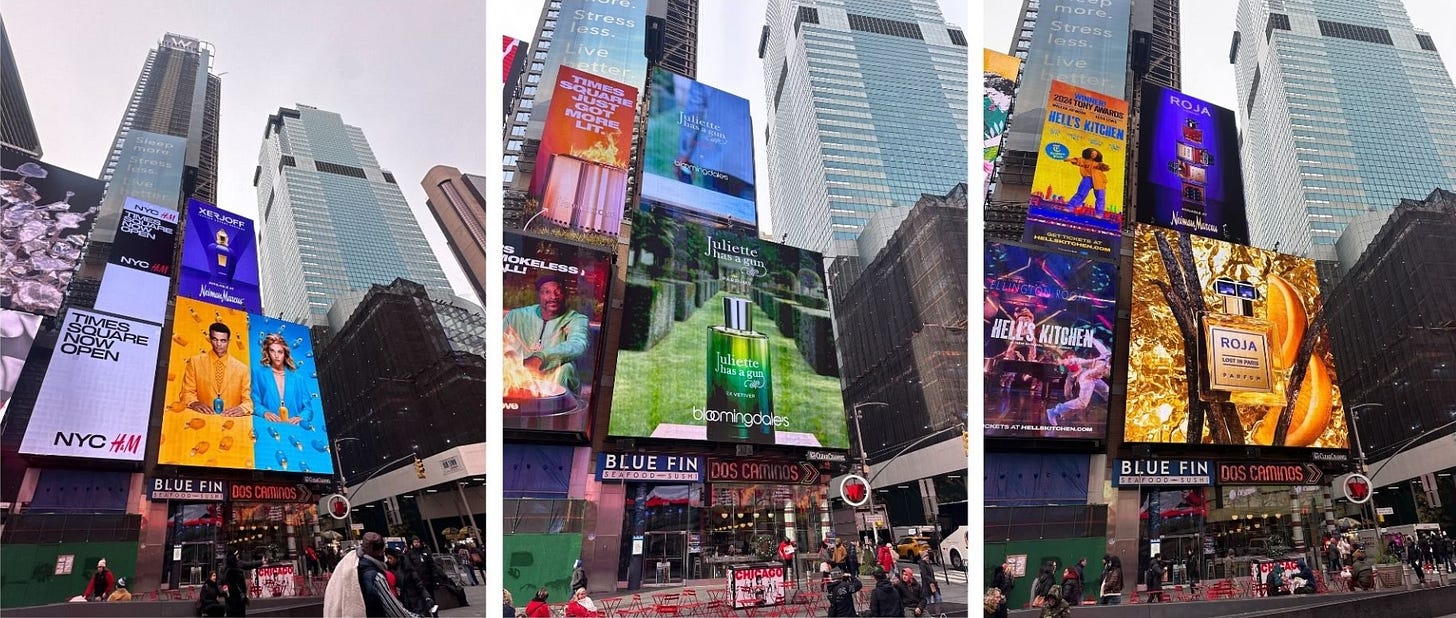Breaking the Mold: Niche Perfumery's Evolution
How Distribution, Technology and Diverse Voices Are Redefining Niche Fragrances
"I think sometimes genre is a code word to keep us in our place as artists" Beyoncé observed in her Grammy acceptance speech. This sentiment resonates deeply in the fragrance industry, where the term "niche" increasingly feels less like a descriptor and more like a limitation. During a recent webinar on how Black-owned fragrance brands are redefining "niche", Brianna Arps, MOODEAUX’s founder, reflected: "We're trying to move beyond the label... we may be niche and indie, but we're also spectacular, foundational, inspirational, innovative."
This evolution raises a crucial question: How are today's brands transforming the traditional pillars of niche perfumery?
1. Distribution: From Scarcity to Strategic Accessibility
For decades, niche fragrances thrived on scarcity—sold only in select boutiques, often in limited batches. But today, the industry is shifting, and brands must rethink how they engage consumers in a more accessible world.
Customer-Centric Retail
Scent Bar's approach of organizing fragrances by notes rather than brands represents a significant shift in distribution strategy:
Prioritizes the customer by pushing brands to the background, allowing to focus on fragrance notes.
Forces brands to market hero products, not just brand heritage.
Shifts storytelling toward individual scents rather than overall brand identity.
The Sephora Effect
While Scent Bar redefines how fragrances are displayed, Sephora has reshaped how niche brands recruit a new generation to the category, blurring the line between exclusivity and accessibility. This transformation led established houses like Tom Ford, Kilian and Montale to expand to Sephora alongside newcomers such as Phlur and Boy Smells, bringing these scents to a broader audience:
Smaller sizes make niche fragrances more accessible
Appeals to younger demographics discovering the category
Creates a bridge between prestige and traditional niche retail
2. Formulation: Where Heritage Meets Innovation
Craftsmanship has always been the heart of niche perfumery. But as the industry evolves, brands are redefining artistry—not just through heritage techniques, but through cutting-edge innovation.
Technical Innovation
Amouage's double infusion process blends traditional craftsmanship with precision engineering.
Infiniment Coty's "molecular aura" pushes fragrance longevity to 30 hours.
EveryHuman’s Algorithmic Perfumery machine leverages AI for custom scent creation.
3. Marketing: From Whispers to Amplified Voices
Once defined by word-of-mouth, niche brands are now borrowing prestige playbooks to stand out in an increasingly saturated market.
Traditional Media Adoption
Niche once distanced itself from celebrity and égérie-driven campaigns. Today, that line is vanishing.
Kilian tapped Lucien Laviscount as the face of their fragrance, leveraging his "Emily in Paris" fame
Loewe enlisting Jamie Dornan and Sophie Wilde as ambassadors
Maison Francis Kurkdjian purchases now prime magazine placements
Xerjoff or Roja Dove light up Times Square billboards
Evolution of Storytelling
The category has opened its doors to diverse voices beyond the traditional white French male archetype. This influx of creators from varied backgrounds brings:
BORNTOSTANDOUT: the Korean brand embraces raw, rebellious narratives with for exemple Hinoki Shower, inspired by cigarettes after sex in the woods.
Maja Njie, a London-based perfumer infuses her Swedish and Gambian heritage into her creations.
Versatile’s Foncedalle experiments with olfactive blends like weed, beer and roasted chicken.
4. Price: Redefining Value
It is no longer just about price, brands are redefining what value means through quality and accessibility.
Accessibility Through Format
Smaller sizes & discovery sets let consumers explore without committing to 100ml bottles
Home sampling programs enable intimate trial experiences for online-only brands
Oil-based & solid perfumes from Diptyque’s and Maison Louis Marie offer alternative ways to wear scent.
New Definitions of Value
Lasting power: focus on concentration levels to convey the best product quality, exemplified by Amouage’s Purpose 50, which features its concentration into its product name itself.
Functional benefits: Vyrao neuroscents trigger positive emotional responses.
Clean fragrances: Esas’s synthetic-free organic ingredients and Moodeaux’s skin nurturing fragrances.
The Path Forward: Quality Over Labels
Niche perfumery was built on four core principles: selective distribution, artistic formulation, quiet marketing, and premium pricing. But today, those boundaries have blurred. Niche brands share Sephora shelves with prestige players, and marketing strategies mirror mainstream fragrance campaigns. The lines between categories are dissolving, revealing a fundamental truth: niche is no longer about fitting a label, it’s about carving out a unique identity. As Amouage CEO Marco Parsiegla puts it, they don’t refer to their brand as niche any longer, “because this is not qualifying really what we are about. For us, it’s all about quality. It’s all about the craft”.
Rather than resisting change, brands must redefine what truly makes a fragrance special. If exclusivity is no longer the defining factor, what is? The answer lies in returning to the essence of perfumery—a timeless balance of artistry and innovation. Throughout history, great perfumery has thrived at the intersection of art and science. Today, that delicate dance continues as AI and molecular advances reshape scent creation.
These technological advancements don't replace creativity; they refine it, ensuring perfumery evolves while staying true to its soul. The future of fragrance won't be constrained by rigid categories but defined by those who fearlessly push boundaries and masterfully orchestrate the symphony of innovation and artistry.
[Want to dive deeper into how we got here? Check out Part 1 | Pop Niche: The Blurring Lines of Fragrance Creativity, where we explored how niche perfumery evolved from an underground movement to a category blurred by mass adoption and strategic acquisitions.]






